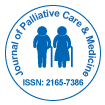开放获取期刊获得更多读者和引用
700 种期刊 和 15,000,000 名读者 每份期刊 获得 25,000 多名读者
索引于
- 哥白尼索引
- 谷歌学术
- 打开 J 门
- Genamics 期刊搜索
- 中国知网(CNKI)
- 电子期刊图书馆
- 参考搜索
- 哈姆达大学
- 亚利桑那州EBSCO
- OCLC-世界猫
- 虚拟生物学图书馆 (vifabio)
- 普布隆斯
- 日内瓦医学教育与研究基金会
- 欧洲酒吧
- ICMJE
有用的链接
开放获取期刊
分享此页面
抽象的
Analysis of Nausea and Vomiting Induced by Three-Day as Compared with Single-Day Cisplatin-Based Chemotherapy
Ping Xiao, Ming Ding, Jingyue Zhang, Yinjuan Sun, Fanlu Meng, Xia Liu, Liyan Gu, Shasha Guan, Ai Gao, Zhicui Ju, Diansheng Zhong
Background: Three-day cisplatin-based chemotherapy, which is related to reduce side effects, has been widely used in clinical practice in China. However, whether three-day cisplatin could reduce chemotherapy-induced nausea and vomiting (CINV) as compared with single-day cisplatin-based regimens was still obscure.
Methods: Patients received single-day cisplatin-based (75 mg/m2) chemotherapy or three-day cisplatin-based (25 mg/m2/day) chemotherapy and treated with neurokinin-1 receptor antagonist (NK-1 RA)-based triple regimens were selected. With the methods of liquid chromatography mass spectrometry (LC-MS/MS), the blood concentration of cisplatin was analyzed. Simultaneously, the complete response (CR) rate and complete protection (CP) rate were evaluated within 5 days after initiation cisplatin-based chemotherapy.
Results: Two hundred and sixty patients (sixty patients received single-day cisplatin-based chemotherapy and two hundred patients received three-day cisplatin-based chemotherapy) were selected. From the 4th day, the blood concentration of cisplatin in three-day cisplatin was higher than that in single-day cisplatin-based treatment and the difference was statistically significant (P < 0.05). In addition, the CR rate in the acute, delayed and overall phases were achieved in 96.7% vs 92.50%, 85% vs 88.50% and 83.3% vs 87.5% between the two groups. The CP rate were obtained in 78.33% vs 74%, 48% vs 44.5%, 46.67% vs 43.5%, respectively. Both showed no significant difference (P > 0.05).
Conclusion: Even though the blood concentration between single-day and three-day cisplatin regimens was different, the incidence of CINV was not significantly different between the two groups with the usage of NK-1 RAbased antiemetic agents.

 English
English  Spanish
Spanish  Russian
Russian  German
German  French
French  Japanese
Japanese  Portuguese
Portuguese  Hindi
Hindi